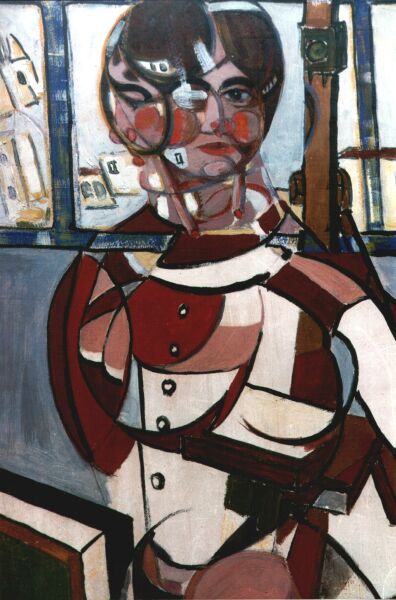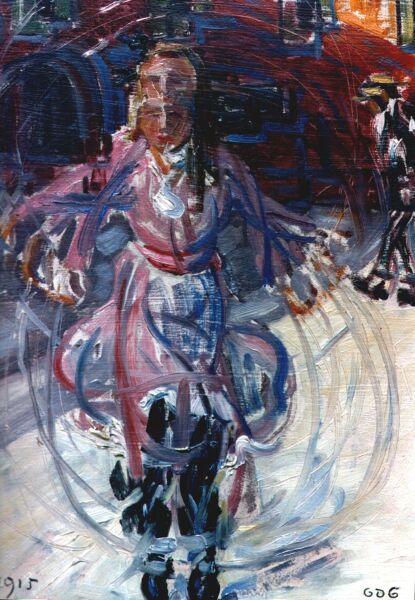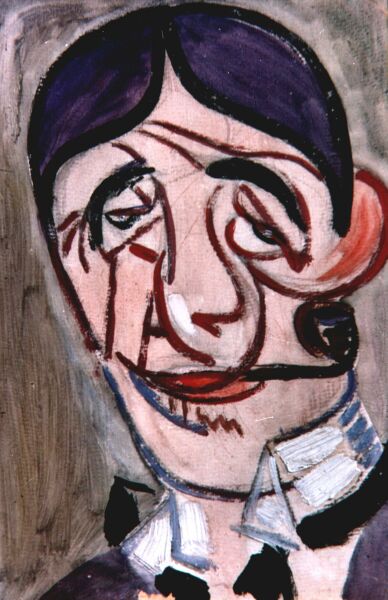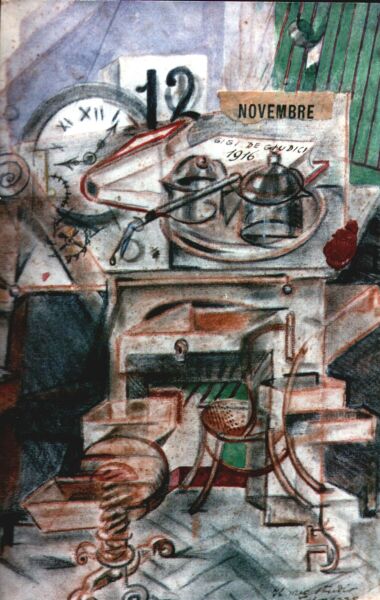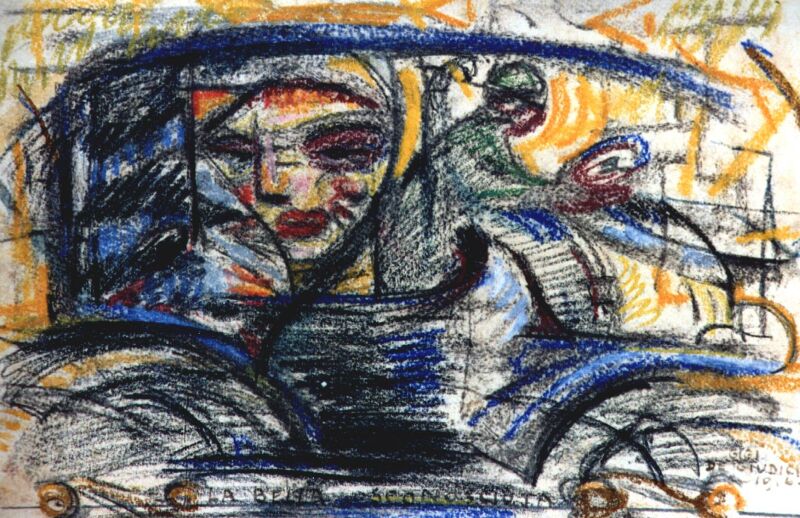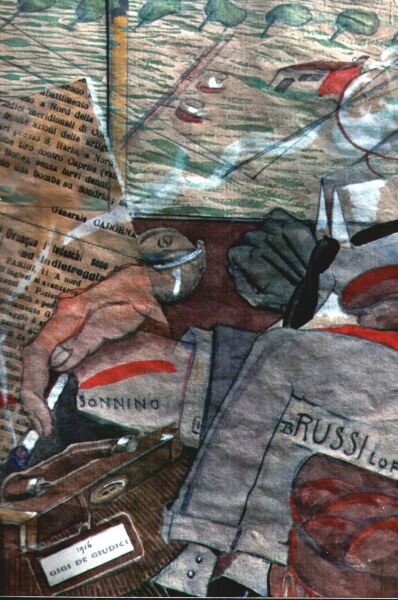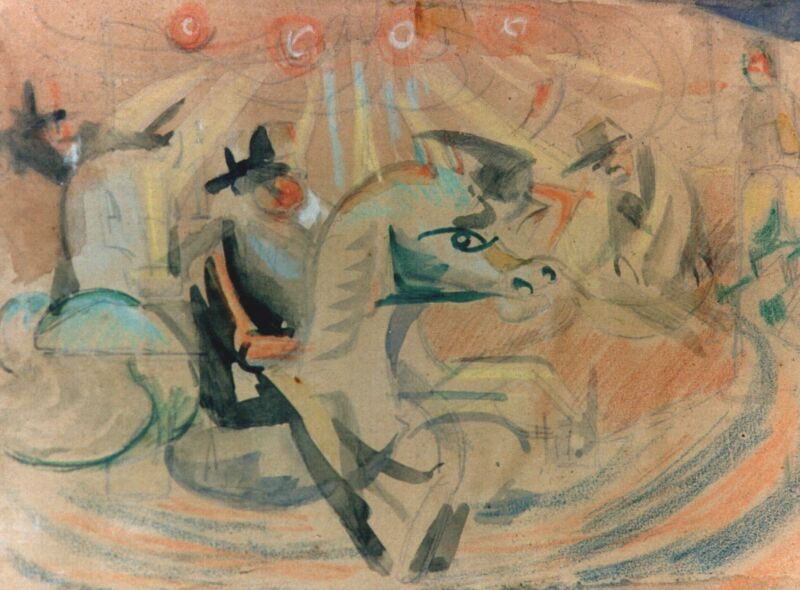<Back to Index>
- Writer and Journalist Aldo Palazzeschi, 1885
- Painter Luigi De Giudici, 1887
PAGE SPONSOR
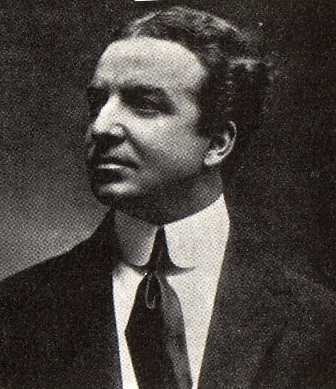
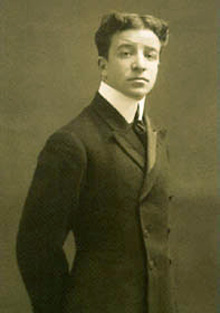

Aldo Palazzeschi (2 February 1885 - 17 August 1974) was the pen name of Aldo Giurlani, an Italian novelist, poet, journalist and essayist.
He was born in Florence to a well off, bourgeois family of Florence, and studied accounting and acting before he published his first book of poetry, I cavalli bianchi (in English, The White Horses) in 1905 using his maternal grandmother's name as a pseudonym. After meeting Filippo Tommaso Marinetti, he became a fervent Futurist. However, he was never entirely ideologically aligned with the movement and had a falling out with the group over Italy's involvement in World War I, which he opposed. His "futurist period" (roughly the 1910s) was a very fecund time in which he published a series of works that cemented his reputation. Most notable of these is his novel Il codice di Perelà (translated into English as Man of Smoke) published in 1911.
During
the interwar era, his productivity lessened, as he became involved in
journalism and other pursuits. Also during this time, he was a notable
anti - Fascist. He returned with a series of novels in the late sixties
and early seventies that resecured his place in the new, post war
avant garde. He died in 1974 in his apartment in Rome. Today he is often
considered an important influence on later Italian writers, especially
those of the neoavanguardia in both prose and verse. His work is well noted by its "grotesque and fantastic elements"
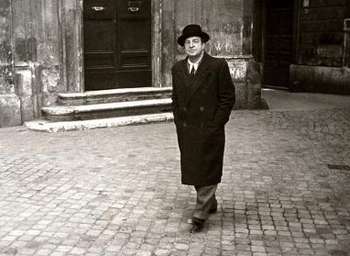
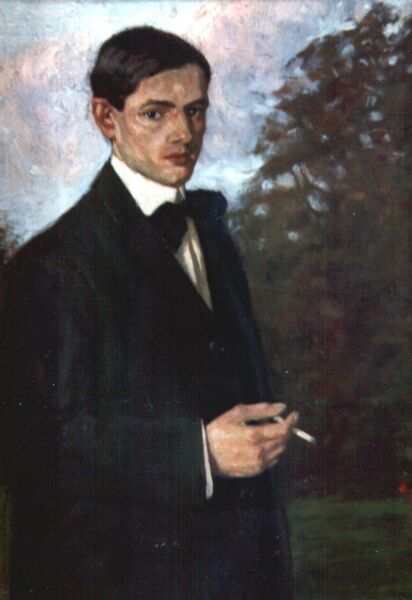
Luigi De Giudici (December 12, 1887 – February 16, 1955) was an Italian painter of the Venetian anti - academic movement in the first years of the twentieth century. His works were exhibited at Ca' Pesaro between 1912 and1920 and at the Internation Exposition of Paris (1937).
He was born in Pavia di Udine of Friuli origins on his father's side and Carnia origins on his mother's side. He artistically grew up in Venice. Starting from the representation of a living room world of liberty taste, also through the irony of caricature, he was sensible to the avant garde movements of the beginning of the twentieth century, from Futurism to Expressionism, from the movement of Pont - Aven to the Secessions in Vienna and Munich. He artistically formed in the unrepeatable melting pot of styles and newness of the Barbantini's Ca' Pesaro of the 1910s. Among his friends were Boccioni, Gino Rossi, Arturo Martini, Mauroner, Pellis, and Pomi.
His career was interrupted in 1919 when, at the age of 32 years, he decided to stop painting. He got married and had six children, and made his living by managing his properties. He was Major of Oderzo from 1925 to 1927.
He
went back to painting in 1931 for personal pleasure and finally stopped
in 1937. When he died in Venice in 1955, his early paintings were found
in a locked chest. Only by chance his son Angelo found his name in a
list of exhibitors of Ca' Pesaro and in 1992 Luigi De Guidici started to
be studied.
